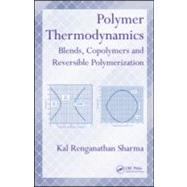Polymer Thermodynamics: Blends, Copolymers and Reversible Polymerization
, by Sharma; Kal Renganathan- ISBN: 9781439826393 | 1439826390
- Cover: Hardcover
- Copyright: 10/10/2011
Polymer Thermodynamics: Blends, Copolymers and Reversible Polymerization describes the thermodynamic basis for miscibility as well as the mathematical models used to predict the compositional window of miscibility and construct temperature versus volume-fraction phase diagrams. The book covers the binary interaction model, the solubility parameter approach, and the entropic difference model. Using equation of state (EOS) theories, thermodynamic models, and information from physical properties, it illustrates the construction of phase envelopes.The book presents nine EOS theories, including some that take into account molecular weight effects. Characteristic values are given in tables. It uses the binary interaction model to predict the compositional window of miscibility for copolymer/homopolymer blends and blends of copolymers and terpolymers with common monomers. It discusses Hansen fractional solubility parameter values, six phase diagram types, the role of polymer architecture in phase behavior, and the mathematical framework for multiple glass transition temperatures found in partially miscible polymer blends. The author also illustrates biomedical and commercial applications of nanocomposites, the properties of various polymer alloys, Fick's laws of diffusion and their implications during transient events, and the use of the dynamic programming method in the sequence alignment of DNA and proteins. The final chapter reviews the thermodynamics of reversible polymerization and copolymerization.Polymer blends offer improved performance/cost ratios and the flexibility to tailor products to suit customers' needs. Exploring physical phenomena, such as phase separation, this book provides readers with methods to design polymer blends and predict the phase behavior of binary polymer blends using desktop computers.







